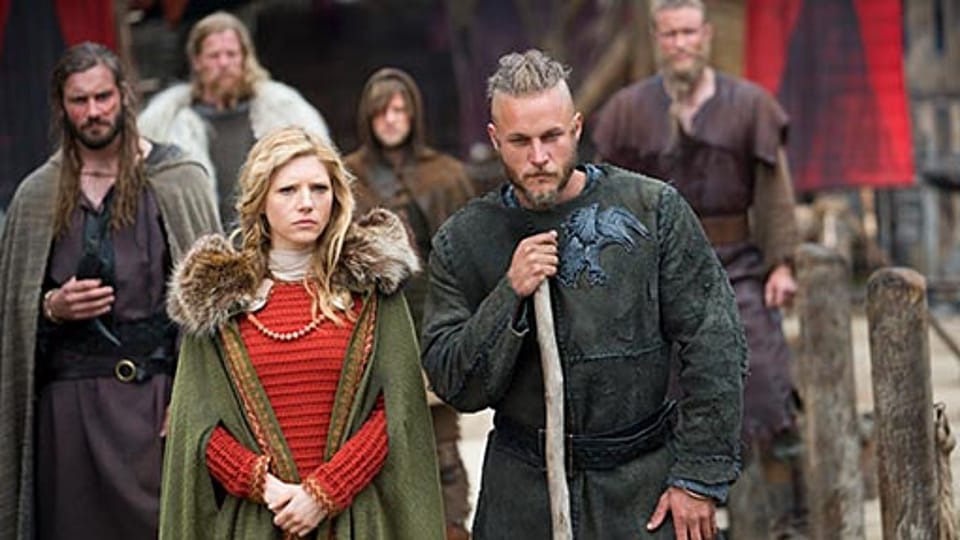Clothing in the Viking Age

It’s the late 8th century, and Europe is buzzing with Vikings. These Norse badasses weren’t just about raiding and conquering. They left their mark in history in more ways than one, including with their killer fashion sense.
Viking clothing wasn’t just about keeping warm; it was a statement. It told the world who you were, where you came from, and how much of a badass you were. The materials, the design, and how you wore it all said something about you.
These Vikings weren’t hitting up the local mall. No, they made their threads from wool, linen, and sometimes even silk. Wool was the go-to for everyday wear because it was tough and easy to find. Linen was popular for summer gear and undergarments, while silk was for the ballers.
Viking clothing was handmade, none of that mass-produced crap. They weaved, sewed, and embroidered everything by hand. Basic stuff like tunics and pants were easy enough, but the fancy gear? That took serious skill and time.
These guys didn’t mess around with boring old clothes. They dyed their gear all sorts of colors—red, blue, green, you name it. Red and blue were hot favorites, and if you were rocking those, you were probably a big deal.
Viking dudes knew how to dress for the occasion. Whether they were raiding villages or just chilling at home, they looked good doing it.
Every Viking bro had a tunic. Long, loose, and made of wool or linen, these bad boys came in all shapes and sizes. Some were knee-length, others stopped at the waist. Throw on a belt, add some embroidery, and you were good to go.
Real Vikings wore pants. None of that tunic-only nonsense. Made from wool or linen, these pants came with a drawstring or belt, ankle-length and ready for action.
You can’t be a Viking without a killer cloak. Made from wool or animal skins, these babies kept you warm and dry during those long boat rides. Fastened with a brooch, they were as stylish as they were practical.
Boots, shoes, sandals—Vikings had it all. Made from soft leather, these kicks were perfect for trudging through mud or stomping on your enemies.
Belts, hats, jewelry—Viking dudes loved their accessories. Belts held up their pants or fastened their cloaks, while hats kept their heads warm. And then there’s the bling—silver and gold jewelry that showed everyone just how much of a badass they were.
Viking women weren’t just sitting at home knitting. They were out there raiding and conquering too, and they looked damn good doing it.
Like the men, Viking women rocked tunics, but they also had dresses. Long, loose, and made from wool or linen, these dresses came in all sorts of styles. Add some embroidery, maybe some beadwork, and you were ready to kick some serious butt.
Aprons weren’t just for cooking. Viking women wore them over their dresses for extra warmth and protection. Plain or fancy, they were a must-have accessory.
For those cold, rainy days, Viking women had shawls. Made from wool or linen, these shawls were as practical as they were stylish, with embroidery or fringe to add a little flair.
Just like the men, Viking women had their pick of footwear—boots, shoes, sandals, you name it. Soft leather, ankle-length or knee-high, they were ready for anything.
Belts, headscarves, jewelry—Viking women knew how to accessorize. Belts held up their dresses, headscarves kept their hair out of their faces, and jewelry? Well, that was just the icing on the cake.
Viking clothing wasn’t just about looking good; it was about making a statement. Whether you were a dude raiding villages or a badass shield-maiden, what you wore said everything about who you were. So next time you’re getting dressed, ask yourself: What would a Viking wear?
